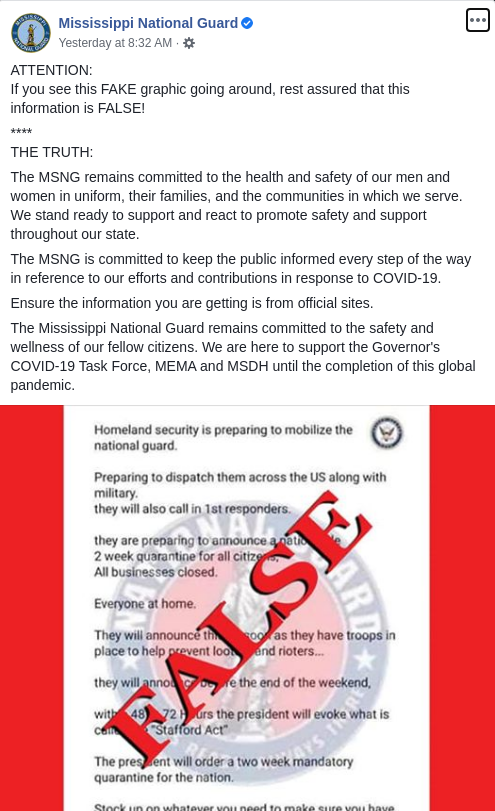Another day of very high COVID numbers. More than 1,000 new cases and another 11 deaths. I know some of you may feel like, “There is no way that is right… must be some kind of conspiracy or cover-up or exaggeration” but I want to try to reassure you that the vast majority of doctors, nurses and medical staff are not deceitful people. They care. They want to help others.
Another day of high numbers in MS pic.twitter.com/bYAMFr22im
— Nick Lilja (@NickLilja) July 10, 2020
The vast majority of them aren’t going to lie to the government about who is sick and who is dead. And how it happened.
I get it. Our brains don’t work with exponentials well. On top of that, our brains are chaos organizers and categorizors. They work hard to make order out of the world. And sometimes they can come up with some pretty specific “answers” to chaotic problems. But those “answers” are rarely correct.
Heat Lightning is a great example. When it gets really hot during the day, at night there is lightning in the sky in the distance. “Must be because it was hot!” they used to say.
Turns out, It is just a distant thunderstorm.
But until we had radar, that is what people thought.
Think about how many times something has happened to you and you’re knee-jerk response was wrong. A random scratched car door, a misinterpreted email, a sink full of dishes.
Only to find out that the car door has been like that, the person didn’t mean to say it the way you read it, and the dishes weren’t left by your son but by your daughter. Happens so much, we don’t even think twice about it.
But you got it right after extra evidence pointed to your original conclusion being incorrect.
It doesn’t mean you were ignorant or gullible. That is how our brains work. But we have to learn to fight that and trust the actual evidence.
And for the record, that is all being a scientist is! Do whatever you can to make sure your brain isn’t tricking you.
So, when you see a video with oddly suspicious circumstances of site-specific “evidence,” that does not mean that it can be extrapolated beyond the four walls in which it was found.
It’s okay if your knee-jerk reaction is to think, “oh man, that could happen…” But you then have to take a step back and think, well is there any other documented evidence by anyone else, anywhere else, supporting that?
Often times, the answer is no.

Just like because someone else’s son doesn’t mow the lawn doesn’t mean your son won’t. Just because someone was selling drugs on the corner, doesn’t mean everyone on the corner is selling drugs.
And just because one post, video, or person is suggesting one thing happened one time, confirming your knee-jerk reaction, does not mean it is happening at all. Ask for proof. Ask for another piece of evidence. And even if it happened once or twice, it doesn’t suggest that it is happening rampantly all across the country.
I see the posts just like you guys. We have to stay disciplined and trust the medical community. They are working hard to understand this virus, find a solution and help us. They care about us.
From the WHO
How does the virus normally spread?</strong
Current evidence suggests that COVID-19 spreads between people through direct, indirect (through contaminated objects or surfaces), or close contact with infected people via mouth and nose secretions. These include saliva, respiratory secretions or secretion droplets. These are released from the mouth or nose when an infected person coughs, sneezes, speaks or sings, for example. People who are in close contact (within 1 metre) with an infected person can catch COVID-19 when those infectious droplets get into their mouth, nose or eyes.
To avoid contact with these droplets, it is important to stay at least 1 metre away from others, clean hands frequently, and cover the mouth with a tissue or bent elbow when sneezing or coughing. When physical distancing (standing one metre or more away) is not possible, wearing a fabric mask is an important measure to protect others. Cleaning hands frequently is also critical.
How else can the virus spread?
People with the virus in their noses and throats may leave infected droplets on objects and surfaces (called fomites) when they sneeze, cough on, or touch surfaces, such as tables, doorknobs and handrails. Other people may become infected by touching these objects or surfaces, then touching their eyes, noses or mouths before cleaning their hands.
This is why it is essential to thoroughly clean hands regularly with soap and water or an alcohol-based hand rub product, and to clean surfaces regularly.
What about aerosols?
There have been reported outbreaks of COVID-19 in some closed settings, such as restaurants, nightclubs, places of worship or places of work where people may be shouting, talking, or singing. In these outbreaks, aerosol transmission, particularly in these indoor locations where there are crowded and inadequately ventilated spaces where infected persons spend long periods of time with others, cannot be ruled out. More studies are urgently needed to investigate such instances and assess their significance for transmission of COVID-19.
Wearing a mask
-logo-who.png)
From the CDC
Here is a great info-graphic on MIS-C from the CDC.


